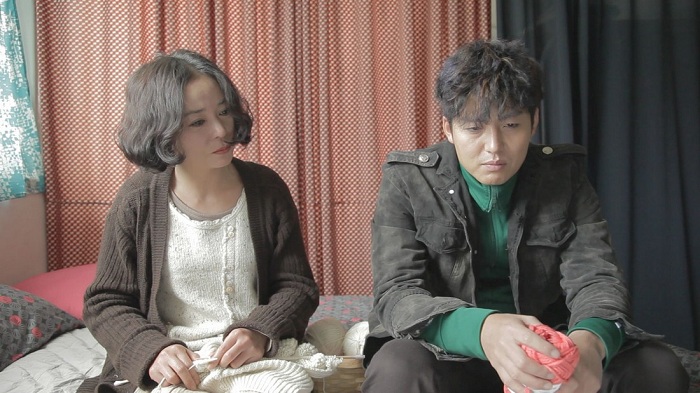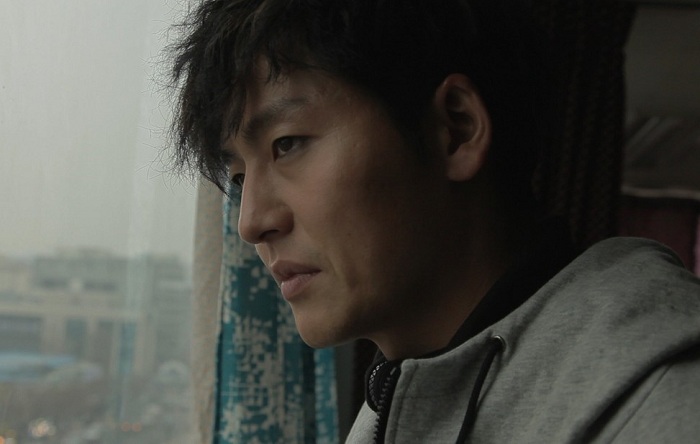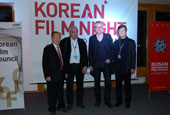When do you think movies were first introduced to Korea?
The debate is still ongoing, but it is reasonably fair to say that regular public screenings of movies existed in major cities by 1903, even though somewhat sporadically. At that time, people were very curious about this new thing called a "movie." Indeed, "the pictures are moving all by themselves," people exclaimed.
By around 1910, the first cinema was built, in one of the most Japanese-concentrated neighborhoods of Seoul, or Gyeongseong as it was then called. In 1912, the Wumigwan Cinema in Jongno-gu began screening movies regularly. Until the 1920s, however, the movies screened at Wumigwan were mostly foreign fair, from Hollywood and Europe. Finally in 1919, the movie "Fight for Justice," or "Uilijeog guto," was released, the first Joseon film, marking the meaningful birth of the Korean film industry.
The Korean Film Archive (KFA) recently announced its list of the top 100 Korean films. It is based on a survey carried out in 2013 to celebrate, and to look back upon, the centennial of the Korean film industry. The survey was given to 62 film critics, directors, producers, agents and others from the film industry. Their answers spanned a diverse range of genres and time ranges, stretching from the earliest years up to 2012. The evaluation categories included: the level of public consciousness of the movie at the time of its release; if the movie reflected unique social aspects of the time; the level of influence the film had in terms of its topics, plot and subject matter; and the amount of publicity received from both the general public and film festivals.
Watching 100 movies back-to-back would take about eight days and eight hours. So out of the KFA's list of films, Korea.net is going to suggest to our readers over the next few weeks some of the must-see films that will help them to understand more about modern day society and about the world in which we live. We will provide a synopsis of each of our favorite movies, along with a brief review of the film by a professional critic.
In the first article, we will introduce "Pieta" (2012), which marked a new era in the film industry. It won the Golden Lion at the 69th Venice International Film Festival in 2012, the event's highest honor.

Comment by film critic and director Jeong Seong-il
When Jesus Christ dies at the cross, the brokenhearted Virgin Mary holds her son tight. Entrapped in deep sadness, Mary looks at her son’s corpse laid on her knees. Almighty God, have mercy on us. In so many words, this is a story about death and resurrection.
This heart-wrenching scene has been repeatedly reenacted in a countless number of pictures and sculptures. Being inspired by the Pieta, the scene common throughout Catholic art where the Virgin Mary holds Jesus' body, Italian artist Michelangelo (1475-1564) completed a beautiful and noble sculpture in 1499. Director Kim Ki-deok said when he first saw the sculpture that he could not help himself, but stood still for a long time, staring at the Michelangelo sculpture at the Vatican. It does not mean that Kim came up with a new cinematic idea right away, on the spot. Kim made his comeback with "Pieta" in 2012, after years and years of silent reception. Before the production of "Pieta," he produced an art-house documentary and a conceptual drama, "Arirang" and "Amen," both in 2011. "Pieta" is Kim's 18th work. In a sense, "Pieta" is Kim’s second debut work.

On one of the coldest days of winter, Kim visited the Cheonggyecheon Stream in downtown Seoul, where he spent his youth doing manual labor. This time, however, it was for a film shoot. On the day in question, there were only a handful of actors and crew on hand, including the lead, Lee Jeong-jin, as well as actress Jo Min-su and two digital cameras, which were handled by a member of the crew, and director Kim himself. Today, the old Cheonggyecheon area is slowly disappearing. The old alleyways of Cheonggyecheon are so complicated, they look like a maze, where people can easily get lost. To Kim, the Cheonggyecheon neighborhood is a jungle, a jungle slowly fading away. This is where every living creature should follow a law, the law of the jungle.
This "jungle" is where the story comes from: a story about a merciless loan shark enforcer and a lady who insists on being his mother. In truth, she is not his mother. She was only plotting revenge for her son, killed by the thug. Kang-do did not trust the woman at first, but he wanted to believe. She also wanted to become his mother. This is where both concepts of “belief” and “wish” conflict. Things become complicated as new concepts of “revenge” and “betrayal” are introduced. Kim jumps into this merciless game, bringing up aspects of a “fake mother" and a “fake son." Kang-do came to own what he never had before, but he loses it as soon as he gets it. The mother gets what was stolen from her, a son, but at the same time she has to throw it away immediately. Both of them come to an understanding that the weight of responsibility can possibly destroy the roles they were supposed to play. With the imaginative knot of “family” tied up, the two protagonists seem to fail in distancing themselves from each other. The game stops here and brings an unavoidable outcome, just as with the philosophical theory of a "preestablished harmony." They have only one way to cut the vicious cycle. They have to delete the existence of themselves. However, here is one more question. Where on earth is the "redemptive power" that can save both of them?
Here is the final ending, as shaped by Kim Ki-deok. Instead of breaking the family fiction, he decides to sacrifice both protagonists who fall into the trap they made themselves.
Someone had to fall from a great height. The other had to intentionally cut off his fingers in a machine. The final words and confessions of the characters are repeated over and over again throughout the film.
"Pieta" seems to be the most talkative film among the works of director Kim. What has been said gets repeated again and again. Compared to his previous works, like "Bad Guy" (2001), that barely has a script, we see a big change here. The words are not an explanation. It simply seems like that during the last few minutes, when they are begging for mercy. Can the words that made holes everywhere else in their world really bring mercy?
The answer is not too optimistic.
The (fake) mother is too successful in her plan, which gets everything destroyed. When the whole plan is revealed, Kang-do learns more than just a fact. He learns the truth.
The audience should focus on the "surplus" which occurred here. The story flows in a very cruel manner, but there is nothing viewers can do concerning the behavior of the protagonists except to sit back and watch helplessly; watch in helpless cruelty. Salvation remains right there. I am cruel and I am helpless, thus you have to make a decision. This is the only gift that I prepared.
Kang-do comes to death at the end. He is in a sweater that his fake mother bought for her real son, and he is lying under a truck. He has a chain around his neck, connected to the underside of the vehicle. The truck is owned by Kang-do's neighbor, who had been threatened by him earlier in the film. The driver of the truck, who knows nothing about what is about to happen underneath, takes off at a high speed as dawn crests the horizon. The blood that flows from Kang-do's body wets the ground, flowing endlessly. The song "Lamb of God" reverberates during the final scene.
Lamb of God,
You take away the sins of the world
Have mercy on us
Lamb of God,
You take away the sins of the world
Grant us peace

Here we learn that there is no resurrection at all, nor redemption. It seems like an empty attempt. The failures might probably be understood by the director himself, by the “fake” mother, by Kang-do, as well as by the whole audience.
By the way, if there is no failure, how can people live in a salvation-free world? It involves pathetic and pitiful behavior, just like a last prayer. Then, can behavior bring mercy or peace? Nobody has the answer for that.
"Pieta" is seen as quite odd and eccentric, and at the same time it is full of bitter emotions. The story is all about waiting for the Messiah, to bring salvation to the self.
In my eyes, "Pieta" is not Kim’s best piece, but it is his most mature.
-Viewed by Jeong Seong-il, film critic and director
*This series of article has been made possible through the cooperation of the Korean Film Archive.
The debate is still ongoing, but it is reasonably fair to say that regular public screenings of movies existed in major cities by 1903, even though somewhat sporadically. At that time, people were very curious about this new thing called a "movie." Indeed, "the pictures are moving all by themselves," people exclaimed.
By around 1910, the first cinema was built, in one of the most Japanese-concentrated neighborhoods of Seoul, or Gyeongseong as it was then called. In 1912, the Wumigwan Cinema in Jongno-gu began screening movies regularly. Until the 1920s, however, the movies screened at Wumigwan were mostly foreign fair, from Hollywood and Europe. Finally in 1919, the movie "Fight for Justice," or "Uilijeog guto," was released, the first Joseon film, marking the meaningful birth of the Korean film industry.
The Korean Film Archive (KFA) recently announced its list of the top 100 Korean films. It is based on a survey carried out in 2013 to celebrate, and to look back upon, the centennial of the Korean film industry. The survey was given to 62 film critics, directors, producers, agents and others from the film industry. Their answers spanned a diverse range of genres and time ranges, stretching from the earliest years up to 2012. The evaluation categories included: the level of public consciousness of the movie at the time of its release; if the movie reflected unique social aspects of the time; the level of influence the film had in terms of its topics, plot and subject matter; and the amount of publicity received from both the general public and film festivals.
Watching 100 movies back-to-back would take about eight days and eight hours. So out of the KFA's list of films, Korea.net is going to suggest to our readers over the next few weeks some of the must-see films that will help them to understand more about modern day society and about the world in which we live. We will provide a synopsis of each of our favorite movies, along with a brief review of the film by a professional critic.
In the first article, we will introduce "Pieta" (2012), which marked a new era in the film industry. It won the Golden Lion at the 69th Venice International Film Festival in 2012, the event's highest honor.

Pieta (2012)
Directed by Kim Ki-deok
The movie "Pieta" pivots around the enforcer Kang-do, played by actor Lee Jeong-jin, who makes a living in very cruel ways, working for a loan shark. He is known to mutilate body parts of his debtors, as doing so gives him some insurance money. One day, he comes across a lady who insists on being his mother. At first, he neither believes what she says nor admits her into his home. She keeps wandering around, despite his cruel abuse and maltreatment. His mind is disturbed, however, and with the passage of time he decides to test whether or not what she says is true. He decides to force her to swallow a piece of flesh sliced off his thigh. She does so. This leads him to admit that she is his mother.
From then on, his life begins to change. He suddenly shows compassion to a debtor who says he is okay with becoming disabled if it can save his baby. He starts to show a warm heart. He sometimes buys presents for his mother. Kang-do feels bitterness at seeing a debtor commit suicide. The petty thief even feels "fear" that his mother might fall victim to any revenge scheme targeted against him. He decides to stop the loan sharking game.
One day, however, Kang-do's mother disappears, pretending to be captured. The main character searches everywhere for his mother, visiting all the possible suspects. During the journey, he comes across a lot of people living in dismal conditions, all affected by his earlier cruelty. One was disabled and has to live with the hardship forever. Another family was living in tears, missing a deceased family member. He also met a person who curses him every day.
Kang-do never can find his mother, anywhere. Later, it turns out that she is not his mother. She is the mother of a man who killed himself because of one of Kang-do's severe attacks. She secretly planned to let him learn how terrible it is to see a beloved one die in front of your eyes. To do so, she pretends to kill herself by falling from the top of an abandoned building in front of Kang-do's eyes. At that moment, however, the woman who we thought was his mother is pushed off the building to her death by another woman. This new woman who suddenly showed up at the building turns out to be the mother of another victim killed by Kang-do. The former enforcer buries the corpse of his "mother" and then kills himself in the final scene.
Comment by film critic and director Jeong Seong-il
When Jesus Christ dies at the cross, the brokenhearted Virgin Mary holds her son tight. Entrapped in deep sadness, Mary looks at her son’s corpse laid on her knees. Almighty God, have mercy on us. In so many words, this is a story about death and resurrection.
This heart-wrenching scene has been repeatedly reenacted in a countless number of pictures and sculptures. Being inspired by the Pieta, the scene common throughout Catholic art where the Virgin Mary holds Jesus' body, Italian artist Michelangelo (1475-1564) completed a beautiful and noble sculpture in 1499. Director Kim Ki-deok said when he first saw the sculpture that he could not help himself, but stood still for a long time, staring at the Michelangelo sculpture at the Vatican. It does not mean that Kim came up with a new cinematic idea right away, on the spot. Kim made his comeback with "Pieta" in 2012, after years and years of silent reception. Before the production of "Pieta," he produced an art-house documentary and a conceptual drama, "Arirang" and "Amen," both in 2011. "Pieta" is Kim's 18th work. In a sense, "Pieta" is Kim’s second debut work.

On one of the coldest days of winter, Kim visited the Cheonggyecheon Stream in downtown Seoul, where he spent his youth doing manual labor. This time, however, it was for a film shoot. On the day in question, there were only a handful of actors and crew on hand, including the lead, Lee Jeong-jin, as well as actress Jo Min-su and two digital cameras, which were handled by a member of the crew, and director Kim himself. Today, the old Cheonggyecheon area is slowly disappearing. The old alleyways of Cheonggyecheon are so complicated, they look like a maze, where people can easily get lost. To Kim, the Cheonggyecheon neighborhood is a jungle, a jungle slowly fading away. This is where every living creature should follow a law, the law of the jungle.
This "jungle" is where the story comes from: a story about a merciless loan shark enforcer and a lady who insists on being his mother. In truth, she is not his mother. She was only plotting revenge for her son, killed by the thug. Kang-do did not trust the woman at first, but he wanted to believe. She also wanted to become his mother. This is where both concepts of “belief” and “wish” conflict. Things become complicated as new concepts of “revenge” and “betrayal” are introduced. Kim jumps into this merciless game, bringing up aspects of a “fake mother" and a “fake son." Kang-do came to own what he never had before, but he loses it as soon as he gets it. The mother gets what was stolen from her, a son, but at the same time she has to throw it away immediately. Both of them come to an understanding that the weight of responsibility can possibly destroy the roles they were supposed to play. With the imaginative knot of “family” tied up, the two protagonists seem to fail in distancing themselves from each other. The game stops here and brings an unavoidable outcome, just as with the philosophical theory of a "preestablished harmony." They have only one way to cut the vicious cycle. They have to delete the existence of themselves. However, here is one more question. Where on earth is the "redemptive power" that can save both of them?
Here is the final ending, as shaped by Kim Ki-deok. Instead of breaking the family fiction, he decides to sacrifice both protagonists who fall into the trap they made themselves.
Someone had to fall from a great height. The other had to intentionally cut off his fingers in a machine. The final words and confessions of the characters are repeated over and over again throughout the film.
"Pieta" seems to be the most talkative film among the works of director Kim. What has been said gets repeated again and again. Compared to his previous works, like "Bad Guy" (2001), that barely has a script, we see a big change here. The words are not an explanation. It simply seems like that during the last few minutes, when they are begging for mercy. Can the words that made holes everywhere else in their world really bring mercy?
The answer is not too optimistic.
The (fake) mother is too successful in her plan, which gets everything destroyed. When the whole plan is revealed, Kang-do learns more than just a fact. He learns the truth.
The audience should focus on the "surplus" which occurred here. The story flows in a very cruel manner, but there is nothing viewers can do concerning the behavior of the protagonists except to sit back and watch helplessly; watch in helpless cruelty. Salvation remains right there. I am cruel and I am helpless, thus you have to make a decision. This is the only gift that I prepared.
Kang-do comes to death at the end. He is in a sweater that his fake mother bought for her real son, and he is lying under a truck. He has a chain around his neck, connected to the underside of the vehicle. The truck is owned by Kang-do's neighbor, who had been threatened by him earlier in the film. The driver of the truck, who knows nothing about what is about to happen underneath, takes off at a high speed as dawn crests the horizon. The blood that flows from Kang-do's body wets the ground, flowing endlessly. The song "Lamb of God" reverberates during the final scene.
Lamb of God,
You take away the sins of the world
Have mercy on us
Lamb of God,
You take away the sins of the world
Grant us peace

Here we learn that there is no resurrection at all, nor redemption. It seems like an empty attempt. The failures might probably be understood by the director himself, by the “fake” mother, by Kang-do, as well as by the whole audience.
By the way, if there is no failure, how can people live in a salvation-free world? It involves pathetic and pitiful behavior, just like a last prayer. Then, can behavior bring mercy or peace? Nobody has the answer for that.
"Pieta" is seen as quite odd and eccentric, and at the same time it is full of bitter emotions. The story is all about waiting for the Messiah, to bring salvation to the self.
In my eyes, "Pieta" is not Kim’s best piece, but it is his most mature.
-Viewed by Jeong Seong-il, film critic and director
*This series of article has been made possible through the cooperation of the Korean Film Archive.





